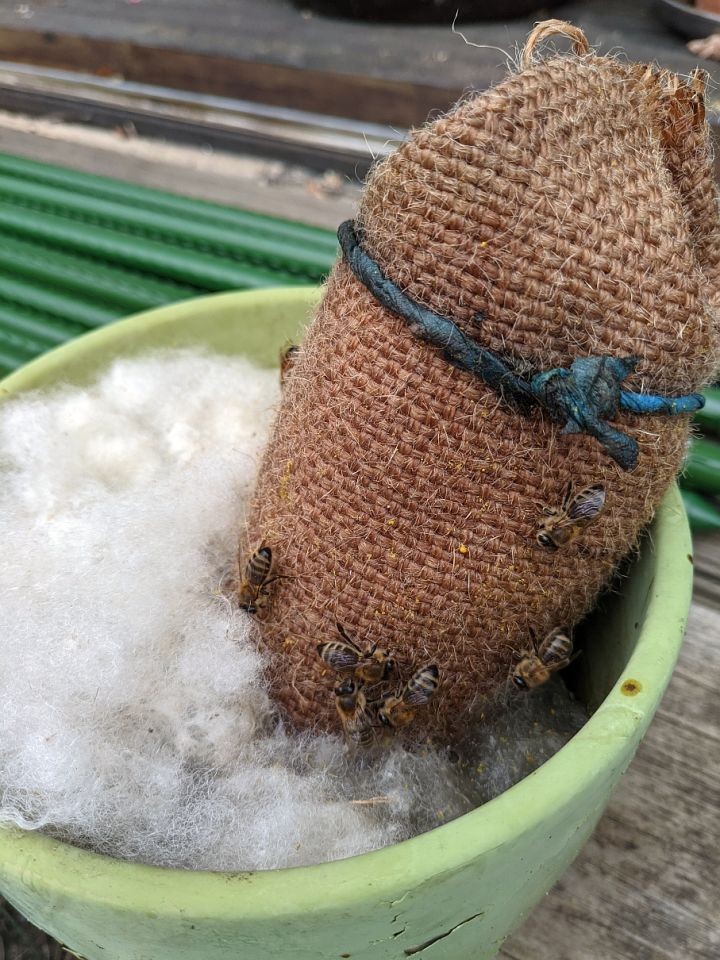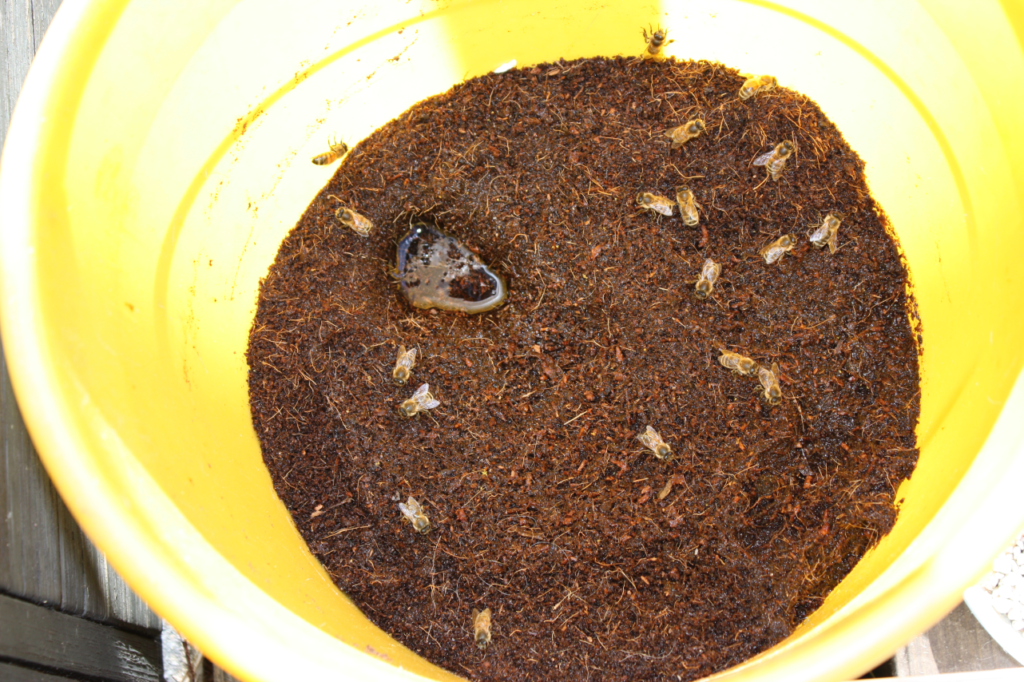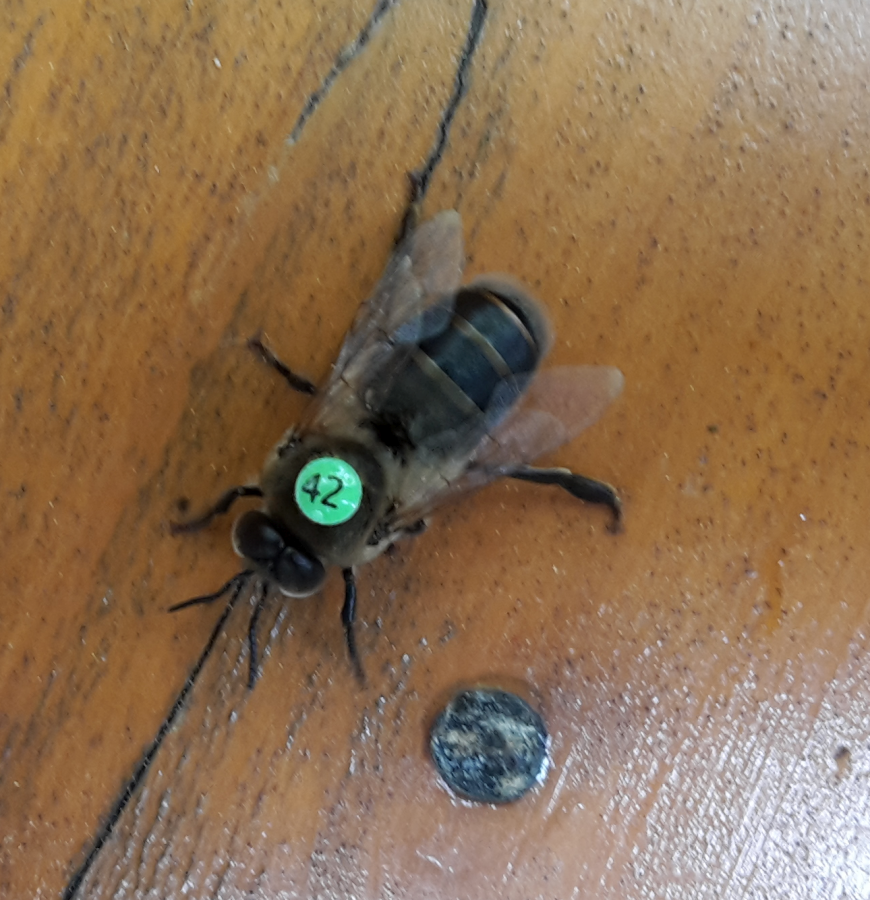About a year ago, I sort of decided that keeping bees would be a nice thing to do, as there are too few bees around hereabouts, and it can never hurt to have some more. Bees are wonderful, astounding and fascinating creatures - they not only produce honey (which I don't eat so much of, but I still like it quite a bit), wax (one of the main reasons why they were cultivated in the Middle Ages - there's much less wax to be harvested from a hive than honey) and propolis (I always have a bottle of propolis dissolved in alcohol in my travelling kit), they are also the reason why we get to eat fruits and vegetables. Many, many edible things would not be there if it weren't for the bees...
However, before taking the lives and well-being of several thousand creatures (like 30-50.000) into my hands, I'd like to have some proper grounding in knowledge and experience. So I spent this Saturday learning about the many things that can befall bees and make them suffer, or even die.
One of the things every beekeeper these days has to cope with, and be on the lookout for, is the
varroa mite. That is a parasite originally living off Asian honey bees, but it has spread to almost everywhere worldwide these days. The other bees, though, have never developed coping mechanisms for this parasite - so without treatment, the mites will suck on the bee brood and the adults, shortening their lifespan by about one third. Which means that without treatment, the winter worker bees will not survive until April, and die about at the end of January or in February instead. With a lot of the workers dead, the hive cannot generate enough warmth anymore, and there are not enough bees to get the colony going again in spring - so the whole hive will die off.
Another thing, that I will hopefully never have to see myself when keeping bees, is
American Foulbrood. This is a bacterial infection that targets the bee brood, and the younger brood is very vulnerable to the bacteria - as little as a single one is enough to infect a one-day old larva. The honey from a hive with this disease is still safe for human consumption, and in some countries it is acceptable practice to keep the symptoms down with antibiotic treatment. However, this means that the honey you buy might contain spores of the bacterium - completely safe to consume for you, but dangerous to bees. If bees eat that honey, they carry the bacteria back to their hive, and there the nasty little buggers can wreak havoc. A hive that is infested with AFB has to be killed off, and the hive box and equipment has to be either burned to destroy it or disinfected completely. If you have AFB in Germany, you have to inform the authorities, there will be an off-limits area established around the stricken hive, and all hives inside the area will have to be tested for AFB as well. This disease? It's really, really nasty. And it can be spread by honey that is perfectly fine and healthy for humans to eat.
Which means... please don't spill honey outside, or leave honey for insects to find and eat. Make sure any honey containers are rinsed, or closed properly (or both) before tossing them. Your honey spills could kill off a bee hive - or even several.






